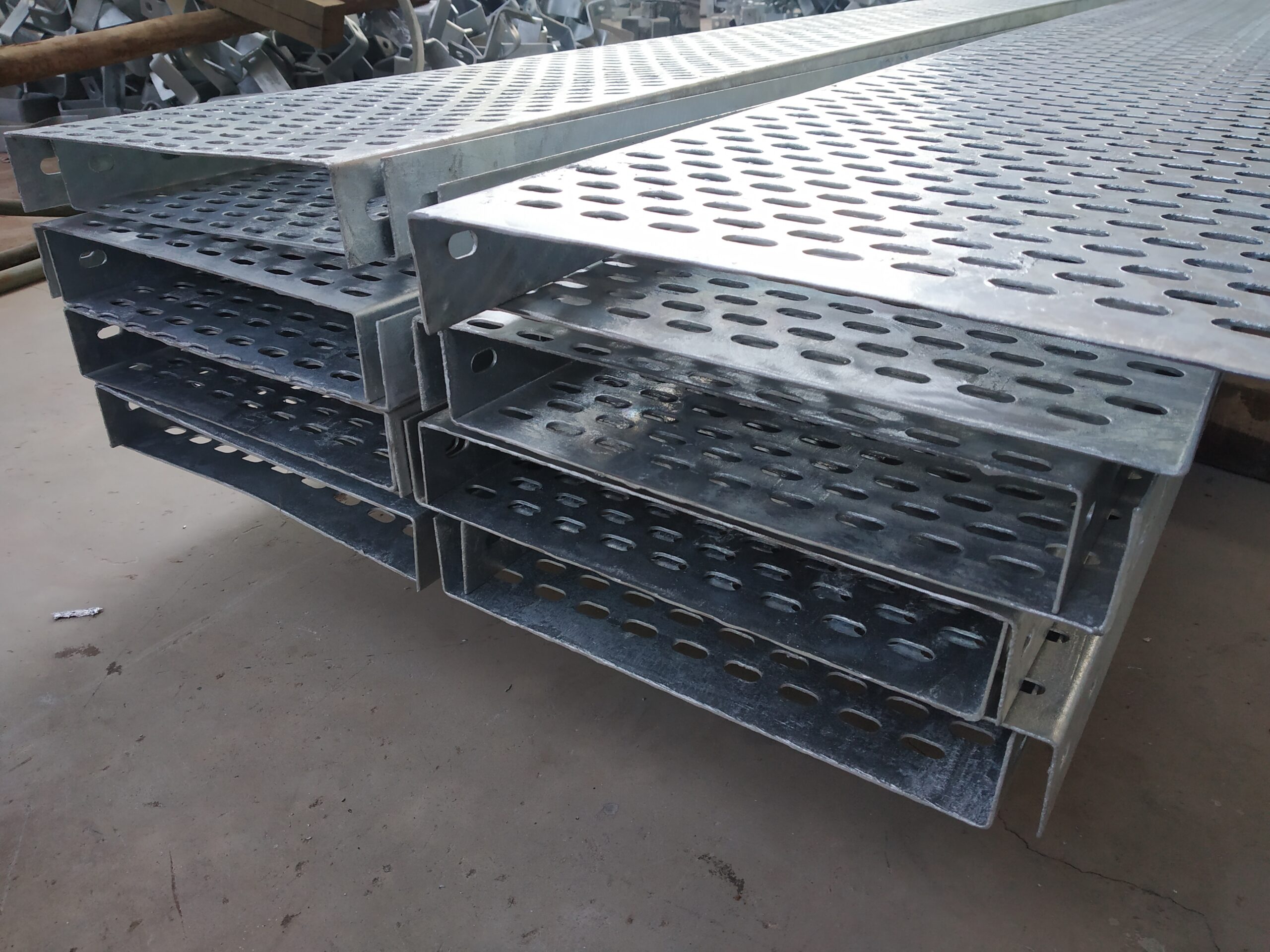Introduction to Hot Dip Galvanizing
Hot dip galvanizing is a process used to protect steel from corrosion by applying a zinc coating. It involves immersing the steel in molten zinc, which creates a metallurgical bond with the surface. This protective layer shields the steel from the corrosive effects of moisture, chemicals, and other environmental factors.
The Galvanizing Process
- Surface Preparation: The steel is cleaned to remove any dirt, rust, or contaminants. This step ensures proper adhesion of the zinc coating.
- Immersion in Molten Zinc: The prepped steel is dipped into a bath of molten zinc at a temperature of around 450 degrees Celsius. The zinc reacts with the steel, forming a series of zinc-iron alloy layers on the surface.
- Inspection: After the steel is removed from the zinc bath, it undergoes a thorough inspection to check for uniformity and adherence of the zinc coating. Any imperfections are addressed before the galvanized product is ready for use.
Benefits of Hot Dip Galvanizing
Hot dip galvanizing offers several advantages for corrosion protection:
- Enhanced Durability: The zinc coating provides a robust barrier against corrosion, extending the lifespan of the steel product.
- Low Maintenance: Galvanized steel requires minimal maintenance, reducing long-term costs and efforts.
- Cost-Effectiveness: Hot dip galvanizing is a cost-effective corrosion protection method compared to alternatives like painting or electroplating.
- Environmental Sustainability: Zinc used in the galvanizing process is a recyclable material, making it an eco-friendly choice.
- Versatile Applications: Hot dip galvanizing is suitable for various industries, including construction, automotive, infrastructure, and agriculture.
Applications of Hot Dip Galvanizing
Hot dip galvanizing finds wide-ranging applications in different sectors:
- Construction Industry: Galvanized steel is used for structural elements, roofing, fencing, and other applications that require corrosion resistance and durability.
- Automotive Sector: Hot dip galvanizing is employed in the manufacturing of vehicle parts, chassis, and components exposed to harsh conditions.
- Infrastructure Projects: Galvanized steel is used in bridges, highways, railways, transmission towers, and other infrastructure projects to ensure long-lasting performance.
- Agriculture and Farming: Hot dip galvanizing protects farm equipment, storage tanks, and agricultural structures from corrosion caused by exposure to moisture and chemicals.
Maintenance of Galvanized Steel
To maintain the integrity of galvanized steel:
- Regular Inspections: Periodically inspect the galvanized surface for signs of damage, such as rust or coating wear.
- Cleaning Methods: Use mild detergents and water to clean the surface, avoiding abrasive materials that may scratch the coating.
- Recommended Coatings: Apply additional coatings, such as epoxy or polyurethane paints, to protect the galvanized surface in harsh environments or high-impact areas.
Hot Dip Galvanizing vs. Other Corrosion Protection Methods
Compared to alternative corrosion protection methods:
- Painting: While painting provides a protective layer, it can be prone to chipping and requires regular maintenance. Hot dip galvanizing offers a longer-lasting solution.
- Powder Coating: Powder coating provides excellent aesthetic appeal but may not offer the same level of corrosion protection as hot dip galvanizing.
- Electroplating: Electroplating is suitable for smaller objects, but hot dip galvanizing is more effective for larger structures and components, providing comprehensive corrosion protection.
Hot Dip Galvanizing Cost
The cost of hot dip galvanizing depends on various factors:
- Material Size: Larger pieces require more zinc and have higher galvanizing costs.
- Complexity: Intricate designs or structures with hard-to-reach areas may require additional preparation and dipping time.
- Quantity: Bulk orders often result in lower per-unit costs.
- Geographic Location: Transportation costs can vary based on the distance between the galvanizing facility and the project site.
By choosing hot dip galvanizing, you can ensure the long-term corrosion protection and durability of your steel structures while minimizing maintenance efforts and costs.
Remember to consult with a professional hot dip galvanizing service provider to determine the specific requirements and benefits for your project.

